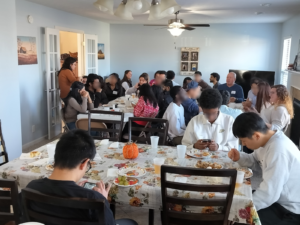Sermon preparation is both a science and an art. That is, there are certain principles that are good safeguards for anyone to follow in order to make sure the message they craft is biblically faithful. That’s the science. But there’s an art, too. That’s when messages get infused with our personality. Our understanding. And our unique ability to communicate truth.
When the audience is made up of a bunch of college students, the “art” and the “science” both still apply. The text says what the text says, regardless of who the audience is, but we should make sure we do what we can to remove any barriers to the communication of that text. We should, for example, consider the type of university and the degree programs offered there. What does that tell us about the aptitude of the students? What they are interested in? What drew them to that school? These are all questions we should ask during the preparation process.
Along with questions like that, here are four additional principles to consider when crafting a sermon for college students:
1. Look for the story
Everything in the Bible has a story. Even the laws of Leviticus or the specific instructions regarding worship of Paul. Everything has a story. Look for the backstory of the text. Why did the author write it like this? What emotions was he feeling as he did? How would the people have received it? What was their personal relationship like with each other? If, as communicators, we can express this larger story, we not only help people get a more full sense of the scope of the text, we also help them connect more deeply to not just the words, but the spirit behind them.
2. Find the thread
If we believe that ultimately the Holy Spirit is the author of Scripture, then there is always a continuity between different parts of Scripture. If we look deeply, we can find the thread between seemingly unrelated parts of the Bible and how they thread together. Sometimes it’s with an image. Sometimes it’s with a single word. Sometimes it’s with an author or an audience. But finding that thread helps people see that the Bible isn’t isolated from itself; it’s one, cohesive unit.
3. Elevate the audience
Simply, nothing is ever “just about” something. A text about parenting is never just about parenting. A text about mildew is never just about mildew. A text about sexual purity is never just about purity. There are cosmological things going on here, and because there are, there is always far more at stake than what might seem to be. A good example of this is Paul’s teaching on marriage in Ephesians 5. At first glance, we might treat the text as “3 Ways to Have a Successful Marriage.” But there is always something more at stake. What is at stake is the fact that marriage is meant to be a walking, talking, living, breathing illustration of the gospel. We must elevate the audience to see the immensity of what’s truly at stake in the seemingly common, everyday stuff of life.
4. Point to Jesus
Jesus is the hero of the Bible. He’s the center of every story. As a seminary professor of mine once said, “The fingerprints of Christ are on every page of the Bible – sometimes you just have to dust for them a little bit.” We must always preach Christ and Him crucified, so that means it’s entirely appropriate when we approach any text to ask the question, “Where is Jesus in this passage?”






